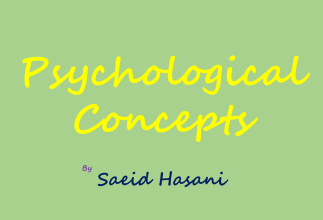Fear, stress, and anxiety are interconnected but distinct psychological and physiological states. Each serves a different function in human survival and adaptation, though they often overlap in experience.
1. Fear: Immediate, Specific, and Survival-Oriented
Definition: Fear is an immediate emotional response to a known or specific threat. It is a primal, automatic reaction designed for survival.
Trigger: A real, present danger (e.g., seeing a snake in front of you).
Physiological Response: The “fight-or-flight” response activates; adrenaline surges, heart rate increases, and muscles tense to prepare for action.
Cognitive Response: Fear narrows attention, focusing on the immediate threat to facilitate quick decision-making.
Duration: Short-term; dissipates once the threat is gone.
2. Stress: Response to External Pressure or Demand
Definition: Stress is a response to external challenges or demands that exceed one’s perceived ability to cope. It can be positive (eustress) or negative (distress).
Trigger: External stressors (e.g., job deadlines, social conflicts, exams).
Physiological Response: Similar to fear but often prolonged; cortisol levels rise, and the body remains on high alert for an extended period.
Cognitive Response: Stress can either enhance performance (in moderate amounts) or impair cognitive function (when excessive).
Duration: Varies; can be short-term (acute stress) or long-term (chronic stress).
3. Anxiety: Future-Oriented, Often Undefined, and Internally Driven
Definition: Anxiety is a diffuse, prolonged sense of apprehension about uncertain or potential threats. It is often irrational or exaggerated.
Trigger: Uncertain or perceived dangers (e.g., worrying about a future event that may never happen).
Physiological Response: Similar to fear but sustained over time; increased heart rate, muscle tension, difficulty concentrating, and restlessness.
Cognitive Response: Anxiety can distort perception, causing overestimation of risk and underestimation of coping abilities.
Duration: Persistent, often chronic, even in the absence of an immediate threat.
4: Key Features and Differences
| Factor/Aspect |
Fear |
Stress |
Anxiety |
| Definition |
Immediate response to a perceived threat |
Reaction to external pressures or demands |
Ongoing worry or unease, often without a direct threat |
| Focus |
Present, immediate threat |
External pressures |
Future, hypothetical threats |
| Trigger |
Real or imagined danger (e.g., seeing a snake) |
External factors (work, exams, deadlines) |
Uncertainty or perceived future threats |
| Duration |
Short-lived |
Varies (short-term or chronic) |
Can be long-term, often prolonged |
| Cause |
Clear and specific |
External challenges |
Vague or undefined |
| Function/Purpose |
Survival, fight-or-flight response |
Helps manage challenges but can lead to burnout if excessive |
Helps prepare for potential threats |
| Physical Symptoms |
Rapid heartbeat, sweating, fight-or-flight response |
Headaches, fatigue, irritability |
Muscle tension, restlessness, difficulty concentrating |
| Response |
Instinctive, automatic |
Effort-based coping |
Worry, cognitive distortion |
5: Let’s Recap
Fear is evolutionary: It helps avoid immediate threats. The amygdala is highly involved in processing fear responses.
Stress is adaptive but harmful when chronic: The hypothalamic-pituitary-adrenal (HPA) axis regulates stress, and chronic stress can lead to burnout and health issues.
Anxiety is anticipatory and often maladaptive: It activates the prefrontal cortex, leading to excessive rumination and “what-if” thinking, sometimes resulting in anxiety disorders.




